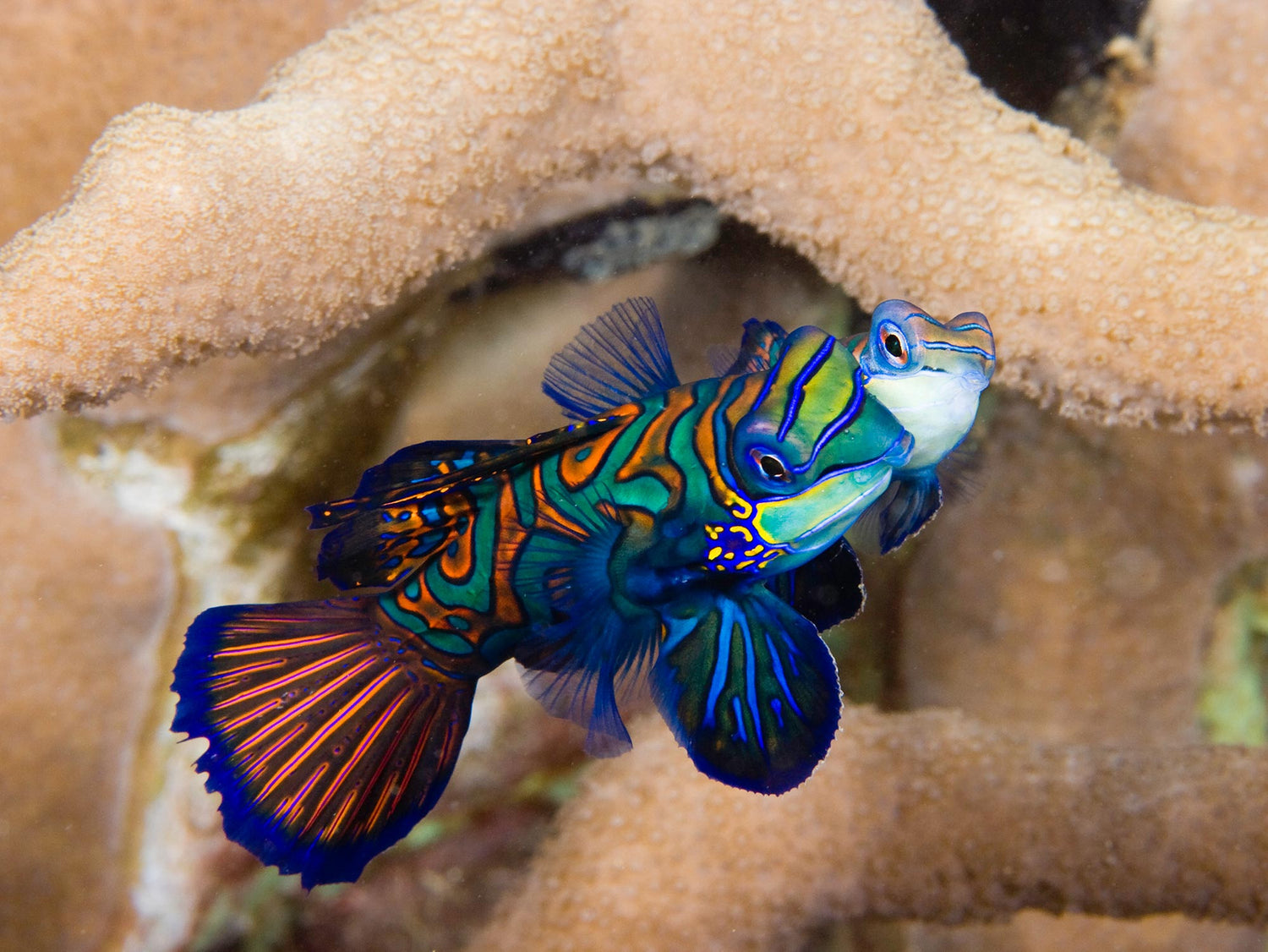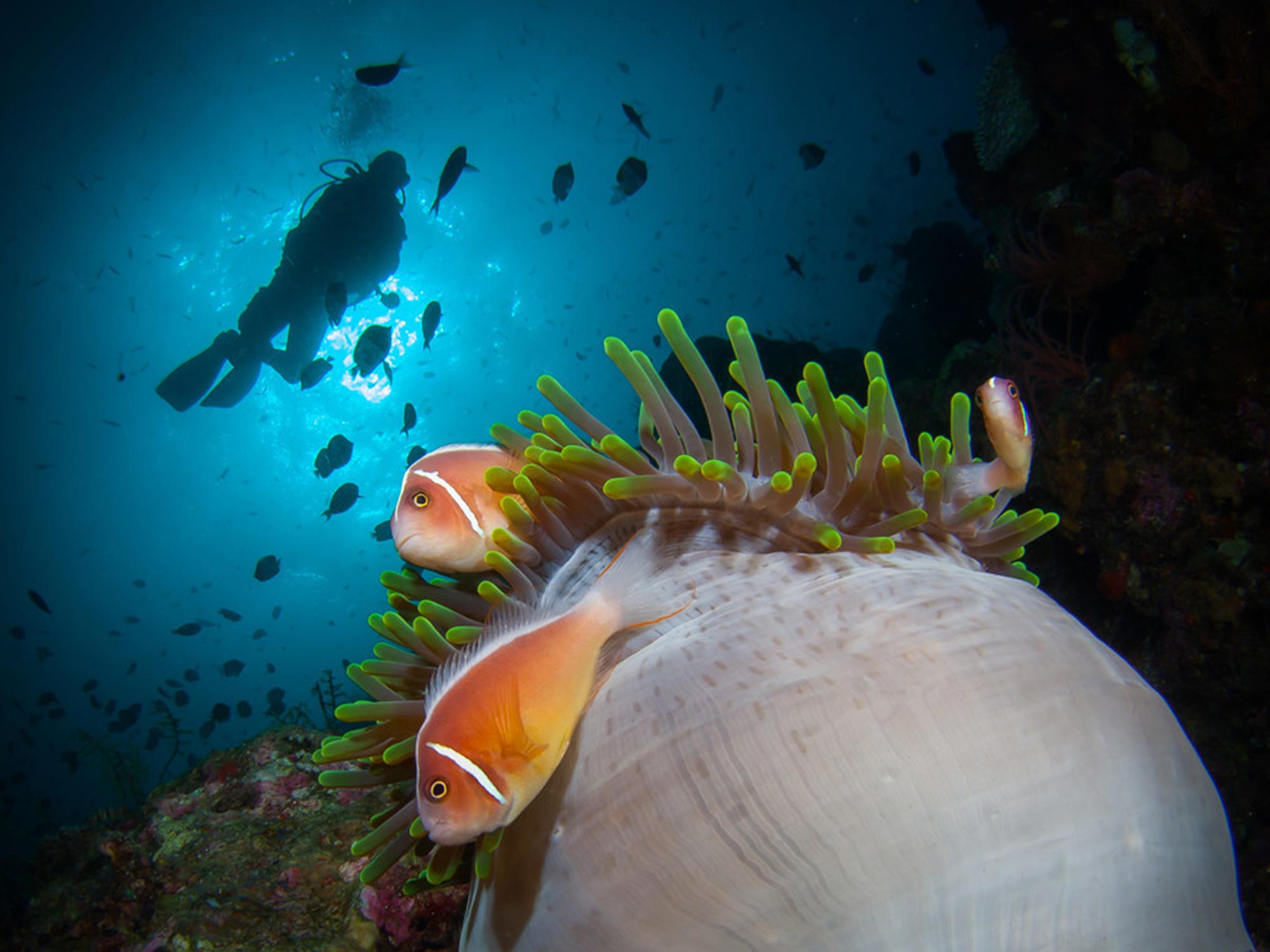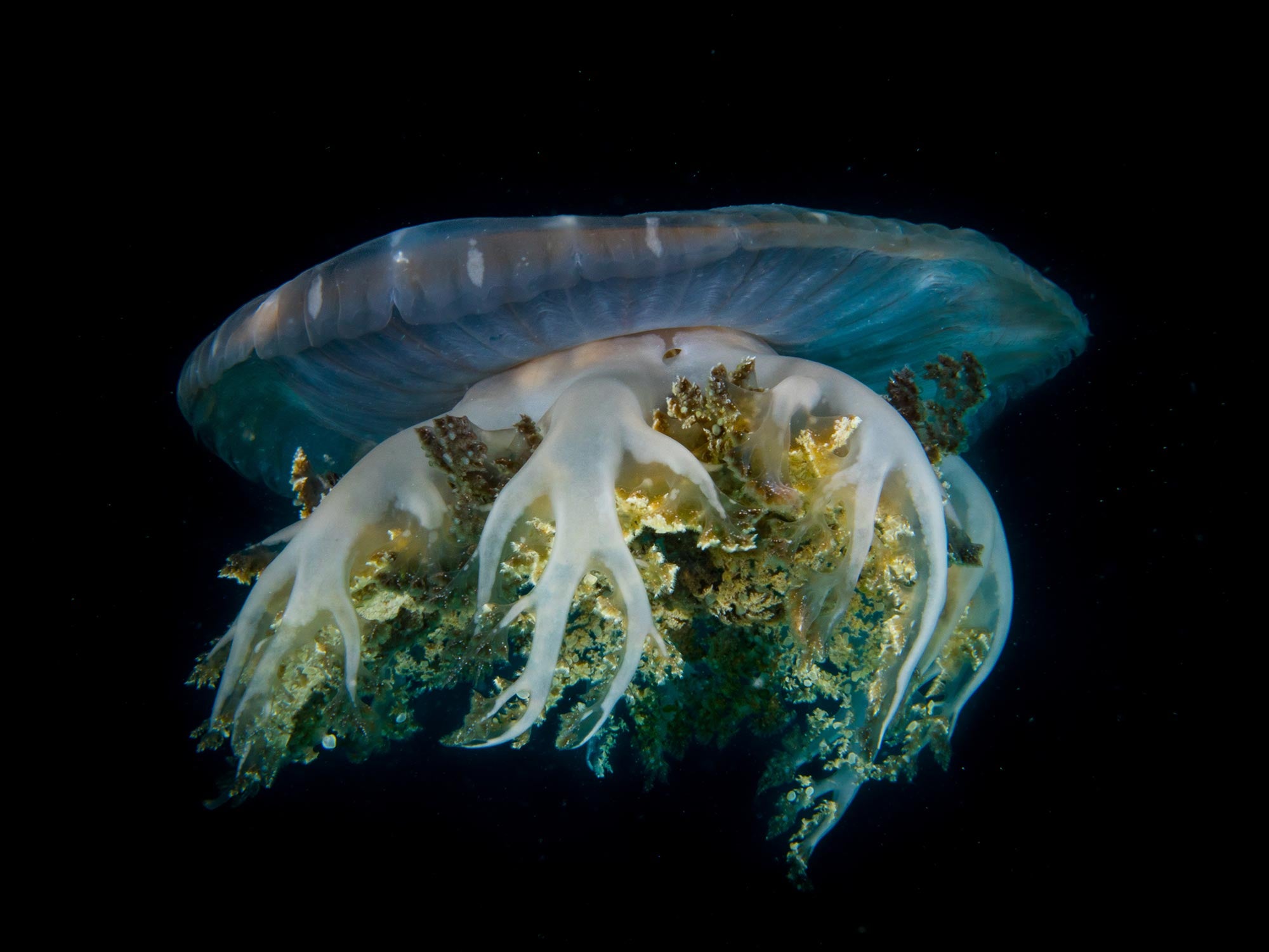© 2021 David Fleetham
Chances are if you're reading this it's probably because you've been told there's a “Mandarinfish Dive” at a destination you're looking at. Mandarinfish are desirable subjects for macro photographers in the South Pacific due to their ornate markings and brilliant “I don't taste good” coloration with green, orange, red, and even blue and purple.
You can spot them occasionally on the reef during the day, but rarely. A typical mandarinfish dive begins just before dusk, often in a very specific area where you settle in and wait for the sun to set and then for the action to begin. Mating pairs will rush up several feet from the bottom and release their eggs, then shoot back down to the bottom. Although it's over in seconds, many individuals doing these same movements make the whole scene chaotic.
Flash is a must, as well as some kind of modeling or video light to help your camera lock focus. You will be "panning" your subject, so macro lenses with shorter focal lengths (35mm-60mm) will make it easier to find your subject than longer lenses (100mm+) but these animals are only a few inches long, so the longer lenses will make tighter shots.

"Too bright a focus light can chase the mandarinfish back into the coral and/or make them a bit hesitant. A not-too-bright setting or a red filter will lessen the effect." - David Fleetham © 2021
Where
South Pacific and usually associated with spawning sites.
DSLR + Mirrorless
Mode: Manual camera, TTL strobe
ISO: 100-200
Aperture: F-11 to F-16 with strobe lighting
Shutter speed: Flash synch speeds of 1/125th to 1/250th
Strobe: 1 or 2 strobes set to TTL and spot metering
Compact and Point and Shoot
Mode: Manual if available, AV or Program otherwise
ISO: 100-200
Aperture: F-8 to F-11
Shutter speed: Flash synch speeds 1/125th to 1/250th
Strobe: 1 or 2 strobes set to TTL
Technique
The action is predictable, but very fast. Using Live View and sighting over the camera can help. Since this is a night dive, your screen will appear very bright and easy to see. Follow a pair knowing that they will eventually break straight up, release the eggs, and shoot back to the bottom.

"You often see one female (larger of the two) - stick with her until a male (or two) shows up. There are usually several individuals on this reef, but to find the mating moment can be elusive and they usually all get together at about the same time. If you miss one pair you have to look quickly for another group before everyone is back into the reef looking for where to spend the rest of the night." - David Fleetham © 2021
 Ambassador Steve Miller has been a passionate teacher of underwater photography since 1980. In addition to creating aspirational photos as an ambassador, he leads the Ikelite Photo School, conducts equipment testing, contributes content and photography, represents us at dive shows and events, provides one-on-one photo advice to customers, and participates in product research and development. Steve also works as a Guest Experience Manager for the Wakatobi Dive Resort in Indonesia. In his "free" time he busies himself tweaking his very own Backyard Underwater Photo Studio which he's built for testing equipment and techniques. Read more...
Ambassador Steve Miller has been a passionate teacher of underwater photography since 1980. In addition to creating aspirational photos as an ambassador, he leads the Ikelite Photo School, conducts equipment testing, contributes content and photography, represents us at dive shows and events, provides one-on-one photo advice to customers, and participates in product research and development. Steve also works as a Guest Experience Manager for the Wakatobi Dive Resort in Indonesia. In his "free" time he busies himself tweaking his very own Backyard Underwater Photo Studio which he's built for testing equipment and techniques. Read more...
Additional Reading
Macro Close-Up Underwater Camera Settings and Technique
Tropical Reef Underwater Camera Settings and Technique
An Insider's Guide to Diving Yap, Micronesia
Common Questions About Strobe Firing, TTL, and Sync Speeds
Why You Need Strobes Underwater













